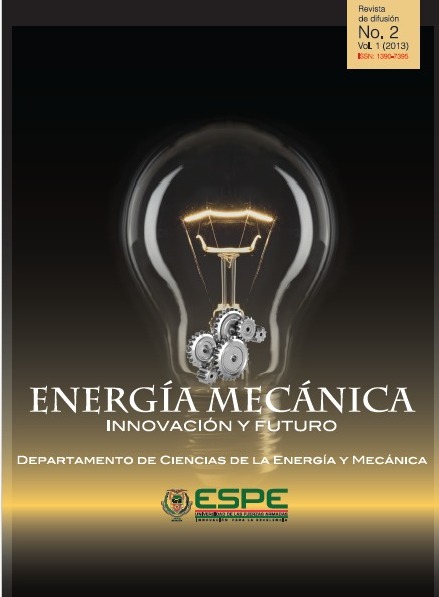ESTIMACIÓN DEL GASTO ENERGÉTICO Y CICLO DE VIDA APLICADOS EN MOTOCICLETAS URBANAS
DOI:
https://doi.org/10.24133/EMIF.V2.14i.3981Resumen
RESUMEN
La metodología presentada, se ha realizado para estimar el gasto energético y ciclo de vida aplicado a componentes de almacenamiento de energía que integran los sistemas de tracción de los vehículos puramente eléctricos. Particularmente se analizará lo concerniente a motocicletas urbanas.
Están definidas las características generales de una motocicleta base, para la selección de un tipo de motor eléctrico que proporcione las prestaciones requeridas según el tipo de uso, se establece la selección de distintas alternativas de sistemas de almacenamiento de energía.
En lo concerniente a ciclo de vida, se analiza la relación de los procesos de construcción y fin de vida de estos sistemas de almacenamiento aplicados a sistemas y componentes para una nueva movilidad eléctrica, cuyo grado de importancia condiciona la factibilidad, viabilidad y sostenibilidad de cualquier proyecto relacionado con la fabricación de vehículos.
De esta manera, se pretende fomentar el uso de las fuentes de energías alternativas y renovables.
Palabras Clave:
Gasto Energético, Ciclo de Conducción, Baterías de tracción, Ciclo de vida.
ABSTRACT
The methodology presented in this article has been developed to estimate the energy expenditure and life cycle applied to mechanisms in energy storage systems, which integrate the traction systems strictly on electric vehicles (EV). The analysis is going to be performed mainly on urban motorcycles.
The results presented include the computed data for the resistance to vehicle movement, as well as the power needed under different operating conditions. However, these results are only considered in graphical form. After estimating the rolling resistance, aerodynamics, and different slope conditions, the driving cycles is integrated to determine the energy spending.
The general features for a base motorcycle are defined to select the appropriate electric motor. The selected electric motor will have to satisfy the required characteristics according to the type of use of the motorcycle. Also, the energy storage system is going be carefully chosen from different options.
Regarding life cycle assessment, it is going to analyze, and understand the relationship from the construction process to the lifetime of the energy storage systems, which are applied to the system components of the new electric transportation era. It has a high degree of importance, since it determines the feasibility, viability and sustainability of any project related to vehicle manufacturing.
Likewise, the objective is to promote the use of alternative and renewable energy.
Key Words:
Energy Expenditure, Driving Cycle, Traction Batteries, Life Cycle Assessment
REFERENCIAS
[1] ARRIBAS Jaime Maquinas de síncronas y de corriente continua. UPM. 2007, España
[2] IZQUIERDO Francisco Aparicio, Teoría e Vehículos Automóviles, Segunda edición, España, 2001
[3] LÓPEZ José María, El medio Ambiente y el Automóvil, España, 2007
[4] LÓPEZ José María, Diseño de un sistema propulsor Eléctrico, INSIA, 2007
[5] COSSALTER Vittore, Motocycle Dynamics, Second Edition. Italy, 2006
[6] LUQUE Álvarez Vera, Ingeniería del Automóvil, Primera Edición, 2007. Madrid España.
[7] LÓPEZ Esteban, Consultoría Vectrix Performance, Latacunga, Ecuador 2013.
[8] GAINES, S., Burnham, Belharouak. Paper: Life-Cycle Analysis for Lithium-Ion Battery Production and Recycling. Argonne National Laboratory. USA, 2010.
Publicado
Número
Sección
Licencia
Los autores que publican en esta revista están de acuerdo con los siguientes términos:
Los autores conservan los derechos de autor y garantizan a la revista el derecho de ser la primera publicación del trabajo al igual que licenciado bajo una Creative Commons Attribution License que permite a otros compartir el trabajo con un reconocimiento de la autoría del trabajo y la publicación inicial en esta revista.
Los autores pueden establecer por separado acuerdos adicionales para la distribución no exclusiva de la versión de la obra publicada en la revista (por ejemplo, situarlo en un repositorio institucional o publicarlo en un libro), con un reconocimiento de su publicación inicial en esta revista.
Se permite y se anima a los autores a difundir sus trabajos electrónicamente (por ejemplo, en repositorios institucionales o en su propio sitio web) antes y durante el proceso de envío, ya que puede dar lugar a intercambios productivos, así como a una citación más temprana y mayor de los trabajos publicados.

